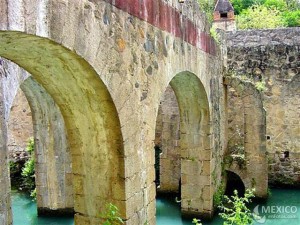
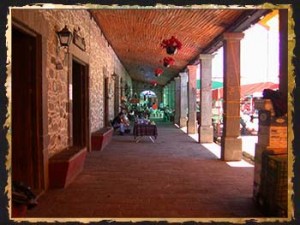 Huasca de Ocampo is located in the state of Hidalgo and its name derives from the Nahuatl Huascazaloyam, which means place of amusement, adopting the “de Ocampo” in honor of the famous politician Melchor Ocampo, who lived in this place for a brief period in the nineteenth century, after leaving Mexico City because of the political repressive imposed by President Antonio López de Santa Anna.
Huasca de Ocampo is located in the state of Hidalgo and its name derives from the Nahuatl Huascazaloyam, which means place of amusement, adopting the “de Ocampo” in honor of the famous politician Melchor Ocampo, who lived in this place for a brief period in the nineteenth century, after leaving Mexico City because of the political repressive imposed by President Antonio López de Santa Anna.
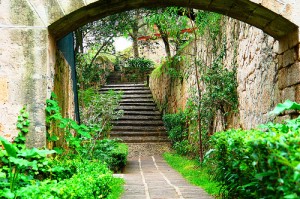 Huasca de Ocampo is a town that still keeps the characteristic taste of the Mexican province; their houses, built of white stone with red gabled roofs, are typical of mining areas and places where it rains almost all year. It was founded between 1760 and 1780 by Pedro Romero de Terreros, named Count of Regla by the Spanish crown, he built the Haciendas of San Miguel Regla, San Francisco Javier, San Antonio Regla and Santa Maria Regla, Huasca was born as a municipality in 1870.
Huasca de Ocampo is a town that still keeps the characteristic taste of the Mexican province; their houses, built of white stone with red gabled roofs, are typical of mining areas and places where it rains almost all year. It was founded between 1760 and 1780 by Pedro Romero de Terreros, named Count of Regla by the Spanish crown, he built the Haciendas of San Miguel Regla, San Francisco Javier, San Antonio Regla and Santa Maria Regla, Huasca was born as a municipality in 1870.
With an impressive heap of history, traditions and an excellent climate Huasca is a comforting place. A stroll through the streets, monuments and wildlife sanctuaries is an unforgettable experience. The Ex Hacienda San Miguel Regla is a building from the eighteenth century that functioned as metal farm, currently it is a hotel, an excellent place to stay and relax for several days, it retains much of its hull, and the arches that were part the courtyards and furnaces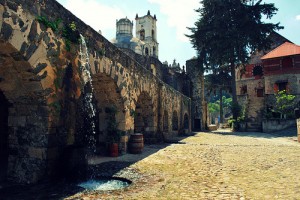 where silver was extracted. Tourists can enjoy their chapel, colonial architecture, modern facilities, a lake and a large piscine as well as interesting walks nearby.
where silver was extracted. Tourists can enjoy their chapel, colonial architecture, modern facilities, a lake and a large piscine as well as interesting walks nearby.
Near here tourists can find the Ex Hacienda Santa Maria Regla, that was the residence of Pedro Romero de Terreros, who named it in honor of the Virgin Marie and became the property of the Count’s daughter when he died, it was the first silver farm that existed in the region and still remain part of their yards and a magnificent chapel.
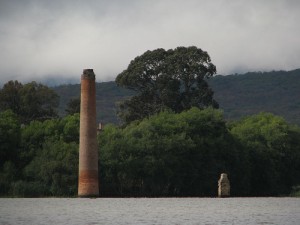 Next to this it is located the Ex hacienda of St Antonio Regla, where there was another farm, but it was submerged due to the construction of a dam, to generate electricity for the city of Pachuca and mines. Today it is only possible to admire the tower sticking out of the waters. Another important hacienda is the Ex Hacienda of St Juan Hueyapan, which was used mainly to livestock and agriculture. It is said that it was built by a nephew of Hernan Cortes on the 1535. In its original structure, it is possible to admire its taverns, stables, barns and a chapel.
Next to this it is located the Ex hacienda of St Antonio Regla, where there was another farm, but it was submerged due to the construction of a dam, to generate electricity for the city of Pachuca and mines. Today it is only possible to admire the tower sticking out of the waters. Another important hacienda is the Ex Hacienda of St Juan Hueyapan, which was used mainly to livestock and agriculture. It is said that it was built by a nephew of Hernan Cortes on the 1535. In its original structure, it is possible to admire its taverns, stables, barns and a chapel.
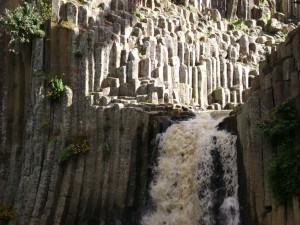 About five miles from here, tourists can find the famous Basaltic Prisms, which are incredible geometric basalt columns located at the foot of a cliff, washed by the waters of the dam San Antonio, these formations, which have an approximate height of 30 meters, were originated when large amounts of lava was cooled suddenly while dropped to the bottom of the canyon during a spill millions of years ago. Baron Alexander von Humboldt, the father of modern geography, visited Mexico in the early nineteenth century and was impressed by the beauty of the site, which is the reason why he drew them in pencil on a sketch that today is exhibited at the Museum of British Art, in London.
About five miles from here, tourists can find the famous Basaltic Prisms, which are incredible geometric basalt columns located at the foot of a cliff, washed by the waters of the dam San Antonio, these formations, which have an approximate height of 30 meters, were originated when large amounts of lava was cooled suddenly while dropped to the bottom of the canyon during a spill millions of years ago. Baron Alexander von Humboldt, the father of modern geography, visited Mexico in the early nineteenth century and was impressed by the beauty of the site, which is the reason why he drew them in pencil on a sketch that today is exhibited at the Museum of British Art, in London.
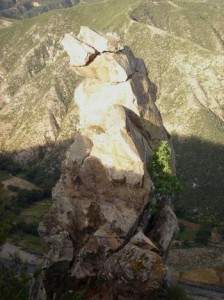 Located north of Santa Maria Regla, in a little path it is possible to find a huge basalt rock, La peña del aire (The rock of the air), which at first glance seems suspended in the air and gives the impression that it is going to fall. The tourist can enjoy an impressive view as well as the deep ravine that is located on one side, which seems to be endless. The landscape is surrounded by beautiful green areas ideal for ecotourism. Tourists can enjoy a wide variety of crafts such as wool clothes, red clay dishes and other pottery, wood furniture and much more. On its main street tourists can also find several shops that offer, among other goods, candles, jewelry or crafts with seeds.
Located north of Santa Maria Regla, in a little path it is possible to find a huge basalt rock, La peña del aire (The rock of the air), which at first glance seems suspended in the air and gives the impression that it is going to fall. The tourist can enjoy an impressive view as well as the deep ravine that is located on one side, which seems to be endless. The landscape is surrounded by beautiful green areas ideal for ecotourism. Tourists can enjoy a wide variety of crafts such as wool clothes, red clay dishes and other pottery, wood furniture and much more. On its main street tourists can also find several shops that offer, among other goods, candles, jewelry or crafts with seeds.
El Chico National Park is one of the oldest parks in the country. It covers 2,739 Ha with dense forests of pine, fir and oak, and which operates a place with camping facilities, shelters and areas for hiking, walking and fishing. Its main attractions, besides its natural beauty, are the elevations of rock located between valleys and canyons that are a challenge even for more experienced climbers.
